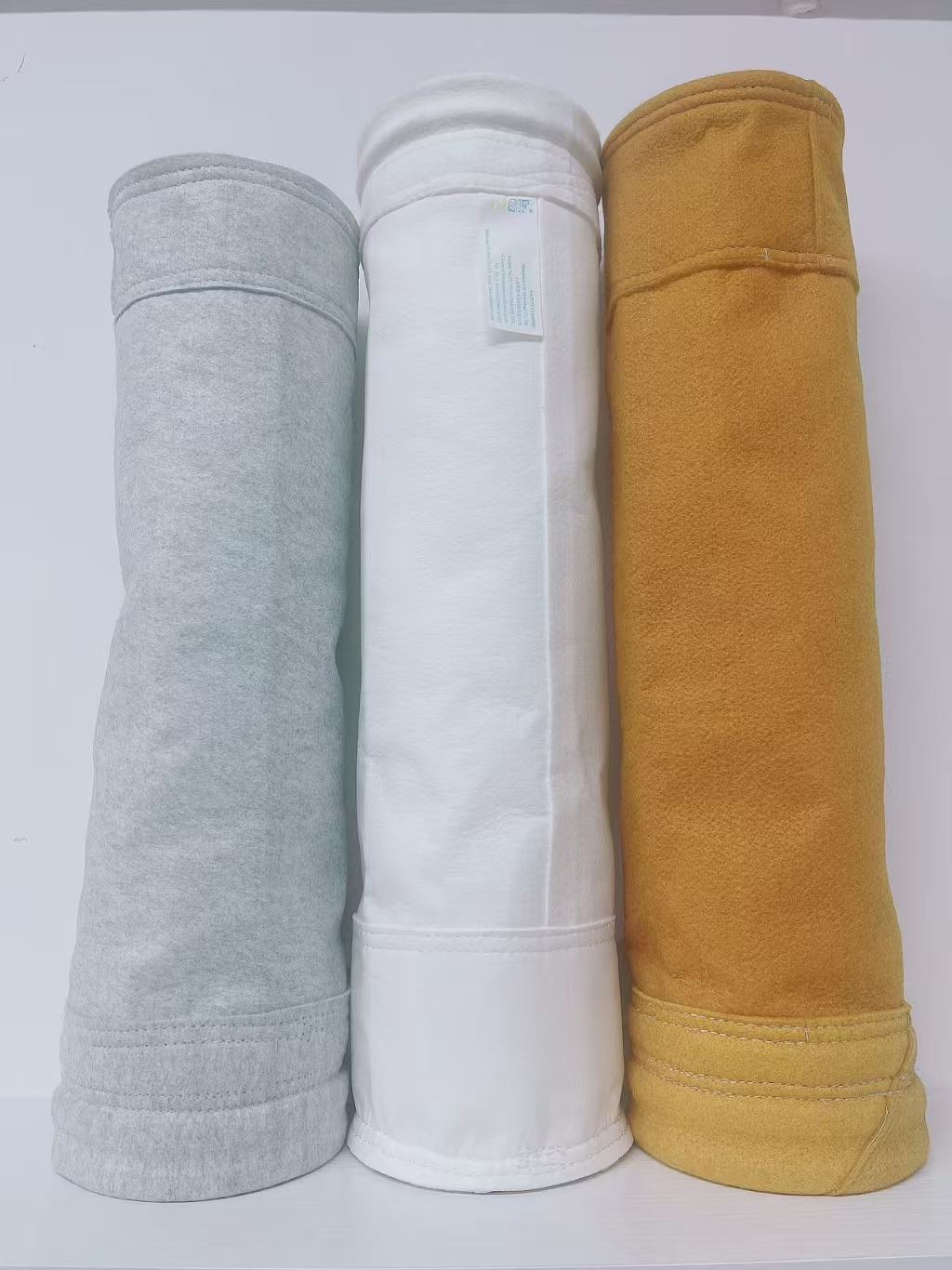Industrial environments vary significantly in dust properties (particle size, humidity, corrosiveness) and operating conditions (temperature, pressure), necessitating tailored filter fabric selection.
High-Temperature Solutions
- Fiberglass Fabrics: Treated with silicone or PTFE, they operate at 280°C for cement kilns and steel sintering machines.
- PPS Needle-Punched Felt: Acid/alkali-resistant and suitable for 190°C applications like waste incineration and coal boilers.
- P84 Needle-Punched Felt: Three-dimensional crimped fibers enhance dust capacity for high-concentration dust.
Medium-Temperature Options
- Polyester Needle-Punched Felt: Cost-effective and 耐温 120℃,广泛用于粮食加工、木器制造。
- 729 Filter Fabric: Smooth surface for easy cleaning in low-energy systems like ceramic kilns.
- Anti-Static Fabrics: Conductive fibers prevent electrostatic buildup in petrochemical and chemical industries.
Special Environment Adaptations
- Membrane-Coated Fabrics: PTFE membranes achieve “zero emissions” for electronics and pharmaceuticals.
- Water/Oil-Repellent Fabrics: Surface treatments resist oil mist and moisture in asphalt mixing and food processing.
- Basalt Composite Fabrics: High strength and abrasion resistance for mining and construction.
Key Selection Criteria
Enterprises must balance filtration efficiency, resistance, lifespan, and cost. For example, fiberglass fabrics have higher upfront costs but last 5+ years for large projects, while polyester fabrics are cheaper and easier to replace for intermittent operations. Customized designs combining materials and surface treatments will dominate future trends.
Enterprises must balance filtration efficiency, resistance, lifespan, and cost. For example, fiberglass fabrics have higher upfront costs but last 5+ years for large projects, while polyester fabrics are cheaper and easier to replace for intermittent operations. Customized designs combining materials and surface treatments will dominate future trends.
Post time: Mar-31-2025
